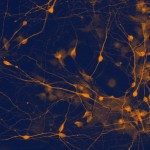Link to Pubmed [PMID] – 7915757
J. Gen. Virol. 1994 Sep;75 ( Pt 9):2499-503
Transmissible subacute spongiform encephalopathies (TSSE) are neurodegenerative diseases characterized by the presence of a modified, partially proteinase-resistant host protein, PrPSc, which accumulates in the brains of infected individuals. Recently it has been reported that amphotericin B (AmB) treatment of hamsters infected with scrapie strain 263K prolongs the incubation period of the disease, and dissociates in vivo replication of the scrapie agent from PrPSc accumulation. We report here on data obtained after treatment with AmB and one of its derivatives, MS-8209, in experimental scrapie of mouse and hamster. Treatment was carried out by the intraperitoneal route 6 days per week, at three different dosages initiated at the time of infection. Two regimens were used: during the early time of infection or throughout the experimental infection. Results indicate that MS-8209 was as efficient as AmB in prolonging the incubation time and decreasing PrPSc accumulation in the hamster scrapie model. A dose-dependent response was observed in mice treated early after experimental infection. At a dose of 2.5 mg/kg, MS-8209 significantly prolonged the incubation period (by 11.9%). In long-term treatment of mice, MS-8209 and AmB markedly reduced PrPSc levels in the preclinical stage of the disease. These data demonstrate that the effect of AmB is not restricted to one model (hamster-263K). This regimen leads to an inversion of the PrPSc to proteinase-sensitive protein (PrPSens) ratio, suggesting PrPSens (presumably cellular PrPC) accumulation occurs before its conversion into PrPSc. As it has been shown that AmB does not modify the infectivity titre, we conclude that the drugs could act by inhibiting either the interaction of the scrapie agent with PrPSens during the early times of infection or the conversion of PrPSens into PrPSc.
